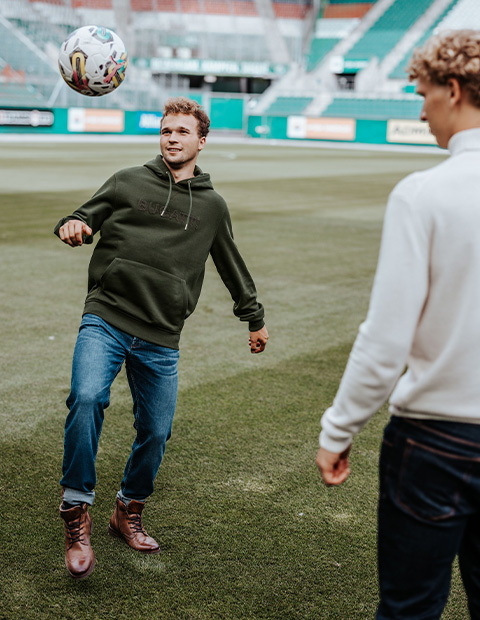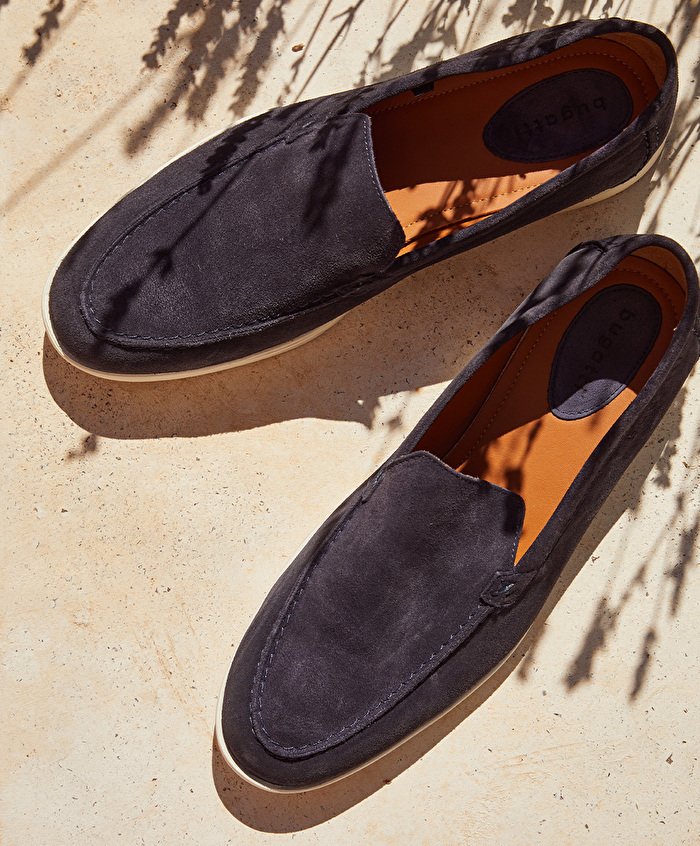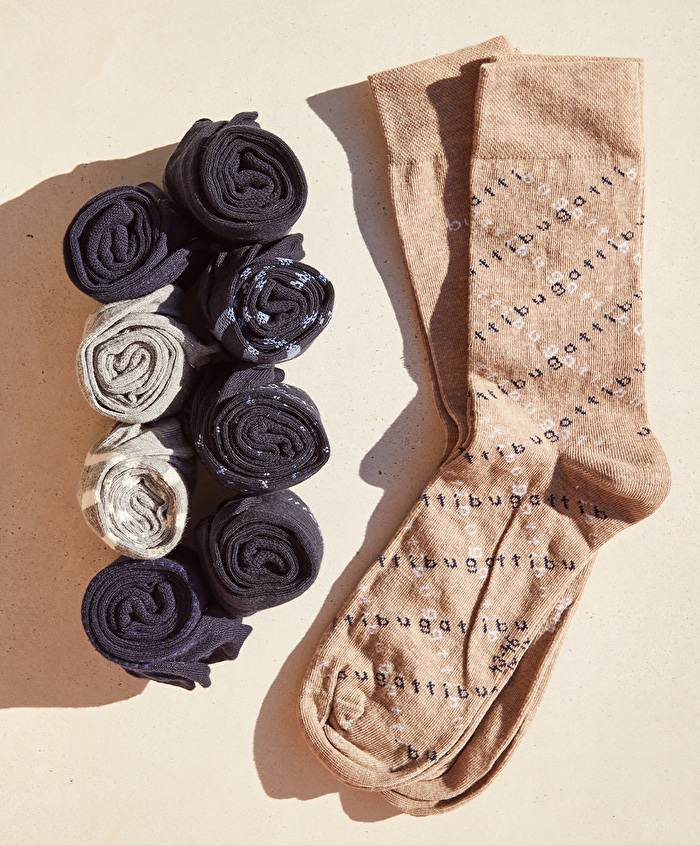How did dress codes evolve?
Dress codes developed over centuries. Even in antiquity, there were already clear rules on what clothing was to be worn on which occasion. The materials they were made of indicated the status of the wearer. Aristocrats wore silk, velvet and fur. The more the different trades evolved, the clearer became their division.
which manifested itself visibly through the wearing of respective clothing. The members of particular guilds and certain orders revealed that they belonged to them through certain pieces of clothing. Carpenters wore clothes that were typical for their trade; blacksmiths and other tradesmen did the same. The rigid set of rules did not change until the French Revolution.
Why do we still have dress codes?
Since the 20th century, clothes and materials are no longer merely indicators that the wearer belongs to a certain social class. We use fashion to express our individuality.
This diversity and individuality are probably also part of the reasons why some dress codes have survived to this day, as they are a way to also visibly express that you belong to certain groups at work.
They are a visible etiquette: they set certain standard and signalise authority and power, for example. Business dress codes for men ensure that despite the rapidly changing fashions, there is a reliable guideline you can refer to when it comes to choosing what to wear.
Smart casual
What does smart casual mean for men? According to the business etiquette, smart casual is more elegant than just casual. An elegant informality that clearly goes beyond the well-groomed leisure time look in terms of quality is typical for smart casual. It is casual yet elegant, carefully chosen and the ideal combination of relaxed and smart.
This dress code is often chosen for business meals – usually also because there is not enough time to get changed. For a smart casual look, men who wear business attire at the office can take off their suit jacket and tie and sit down for a meal in their shirt and suit trousers.
How to wear smart casual
No full suit and tie needed for the smart casual look. Fabric trousers or fine wale corduroy as well as dark jeans are all represented. All kinds of washes, playful appliqué details and striking accessories are usually not acceptable.
All in all, the colour spectrum is mainly in the darker area, especially for cotton and denim trousers. Choosing muted colours is considered more stylish. Dark fabric trousers or jeans should be upgraded with an elegant blazer and smart-casual lace-ups in beige, brown or black.
A nice shirt with a subtle pattern or a polo shirt are suitable smart casual wear. This look extends the casual look with special pieces of clothing made from high-quality materials such as cashmere jumpers or silk shirts.
Business casual
In short, business casual means "no jeans, no tie". This dress code is all about casual and elegant clothes, so the choice is wide. A full suit is too formal for this look, but suit trousers in combination with a smart shirt are fine. All in all, you have quite a bit of scope when it comes to choosing what to wear. The kind of company you for work for also plays a role, as business casual is interpreted in different ways. In many companies, this look actually tends to go towards smart casual; in others, a complete business outfit is required, although it can be cut a bit more comfortably. To find the right measure between casual and elegant, take your guidance from what your boss is wearing and always make sure you're not dressed better than he is!
How to wear business casual
You can wear a suit, but you can also rely on chinos, a button-down shirt and a suit jacket. As mentioned early, the most important rule is the jeans and tie stay in your wardrobe. Elegant fabric trousers, shirts and polo shirts in combination with a blazer as well as sophisticated lace-ups are a typical business casual outfit.
A dark suit worn without a tie and worn with a shirt with the collar unbuttoned is another alternative. In terms of the shoes, brown leather shoes are fine if they go with the rest of the outfit. Sneakers are not suitable business casual footwear, but loafers are fine.
Business attire
Business attire is an elegant, formal looking style of clothing that is often worn by managers and others in senior positions. It is also known as "business formal", "day informal" or "tenue de ville". This dress code does not leave you much scope as a suit is a must. Business attire is the typical business look that is smarter than "business casual". The colour spectrum is very limited, from head to toe.
How to wear business attire
The suit can be black, dark navy or dark grey/anthracite. The rule of thumb is: the more important the position, the darker the outfit. Details are important when it comes to business attire. The shirt should be light-coloured. The tie is always darker than the shirt. Shades of blue and grey are a good idea, although red is also permitted. Limit yourself to two colour and (extremely) understated patterns.
If the suit has a subtle pattern, the shirt should be plain and vice versa. A completely plain outfit looks more sophisticated. You can upgrade it with your choice of cuffs, as cufflinks are allowed but not a must. The socks should be dark, preferably black, and so long that they also cover your skin when you are sitting down. Printed and striking socks are suitable for this dress code. Your shoes must be dark, plain and leather.
Black tie
The dress code black tie is also called cravate noire and is one of the most elegant: you wear a dinner jacket with a shirt and a black bow tie. The clothing style is formal and also suitable for sophisticated evening events in high society. The dress code is strict; the scope for adding your individual style is limited as it basically extends to your cufflinks and the pocket square only.
How to wear the black tie dress code
You wear a black or dark navy dinner jacket with a pocket square and cufflinks. The shirt is white and has a wing tip collar. As it is a no-go for the area where shirt meets trousers to be visible under a single-breasted dinner jacket, the outfit is perfected by a cummerbund or a waistcoat. If you are wearing a double-breasted jacket, it is always worn closed and a cummerbund or waistcoat is therefore not needed. The trousers have no belt loops as you won't be wearing one. Instead, you wear braces. The trousers may have galloon stripes at the sides – a narrow ornamental strip of silk.
Your shoes should be shiny, patent leather is an excellent choice. However, you can also wear elegant smooth leather shoes. The most important accessory is the bow tie. It should be tidy and hand-tied. The width of the bow tie should be guided by your eyes or the outline of your face. The wings should never stick out wider than the short collar.
White tie
White tie, also called cravate blanche, is reserved for very official and extremely formal occasions. It is the most elegant dress code there is. Are you rubbing shoulders with royals, or attending the Vienna Opera Ball, the Nobel Prize presentation or a state banquet? Or are you maybe the conductor of a world-famous orchestra? Then the white tie dress code is relevant to you.
How to wear white tie
An evening tailcoat suit is combined with a white waistcoat worn over a white shirt. The trousers have no belt loops; they are held up by braces. The buttons are extremely sophisticated and usually satin-covered on tailcoats. The shirt buttons are often exquisite. The shirt with a wing tip collar is reinforced with cotton pique in the chest area. The outfit is completed by a white, hand-tied bow tie. The shoes look a little feminine, because if you want to dress absolutely correctly, opera pumps with a slight heel are a must. Alternatively, however, you can also wear elegant patent leather shoes.
Which dress codes are suitable for a wedding?
Business attire, black tie or business casual are all options for weddings. The dress code will usually be stated on the invitation. What is important is that your outfit matches the weather conditions and the venue. Standard is a suit with a shirt as well as nice closed shoes that have been polished to perfection.
Our conclusion
If you company does not specify a dress code, take your guidance from what your boss is wearing. Always make sure that your clothes are well cared for and are not stained or damaged anywhere. Apart from our outfit on top, you should also pay attention to your footwear, because this can either up- or downgrade an outfit.
Especially in the casual to business casual dress code area, comfortable shoes tempt you to wear them day in, day out. In that case, it's a good idea to buy two or three of the same or similar pairs of shoes and to wear them in turn. This reduces wear and tear on the materials and you will be able to wear them for longer. A rule of thumb is that the more senior the position, the more restricted the dress code. Also: the higher you climb the career ladder, the more understated and darker you dress.
We recommend choosing high-quality materials and well-cut designs, regardless of the dress code, to ensure that you always look well-groomed and feel comfortable at all times.
























